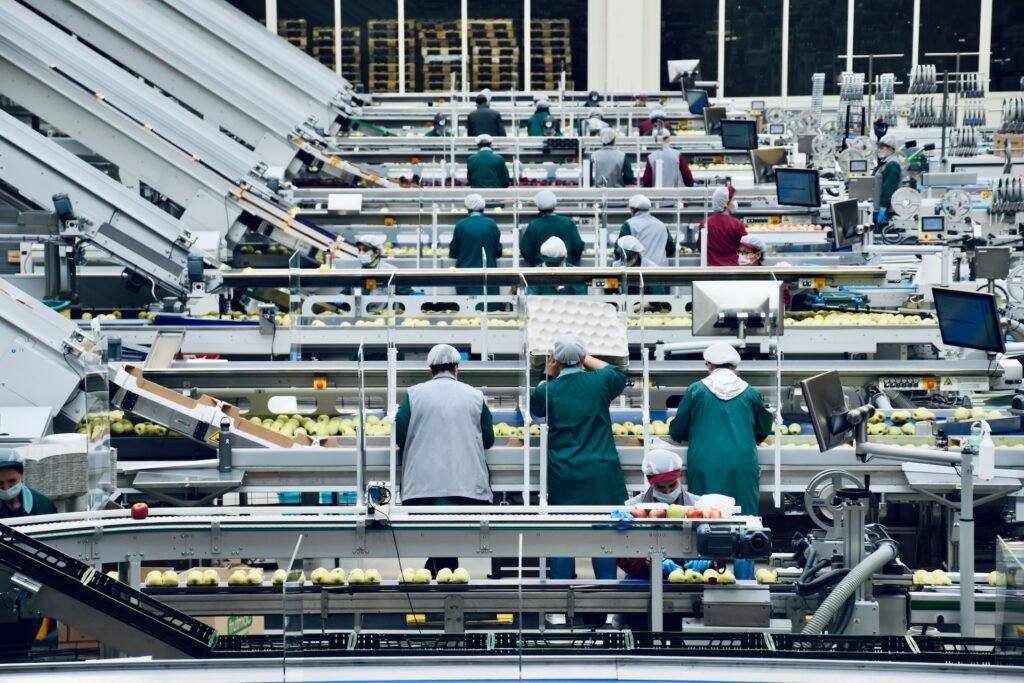
When it comes to manufacturing processes, numerous factors can impact the efficiency of a production line. This remains one of the biggest issues among manufacturers in all industries and production sites. With so many different pieces moving at once and needing to work together as a cohesive unit. It’s easy for one step in the process to become bottlenecked or even cause the whole line to grind to a halt.
This can take place from any number of angles, but most commonly within human resource practices, materials management, and line speeds. All areas which have an impact on how efficiently your production line works.
This guide will explore some of the primary reasons why your production line isn’t operating as quickly or effectively as you’d like it to. From there, you will learn about some key steps that you can take toward streamlining your operation. And creating a faster line with much greater efficiency.
Human Resource Practices That Can Slow Down Production
The most important component of any production line is the people who operate it. Simply put, if your employees aren’t able to work as quickly or efficiently as they should. The rest of the production process will suffer. This can have a domino effect and dramatically slow down the rest of your line.
To begin with, poor hiring practices can lead to the wrong staff being taken on. This can lead to failures and create a situation in which your staff are simply unable to keep up, slowing down production as a result.
Poor training practices can also lead to slower production, particularly if new hires aren’t fully trained in the production process.
Additionally, if your workers are experiencing issues with equipment, such as malfunctioning machinery or broken tools. This can cause them to work more slowly and waste even more time.
Material Management Practices That Lead to Slower Lines
An often overlooked component of the production process, materials management can act as a major bottleneck on your production line. This can occur for several reasons, most notably when the wrong materials are being used or when poor inventory management practices are being used to purchase those materials.
Let’s take a look at both of these issues in more detail.
Using the Wrong Materials – In manufacturing, time is money, and the materials used are an important factor in determining how quickly a line can be completed. In many cases, the materials being used on a production line are the primary factor in determining how long it takes to complete the line. If you’re using materials that are excessively difficult to work with, you’ll likely need more time, and therefore more money, to complete the same line.
Poor Inventory Management – When materials aren’t being received and managed properly. This can lead to a situation in which production is halted until those materials are obtained. And the ‘just in time’ system breaks down.
One of the reasons this happens is when materials become difficult to obtain. Something that at times even the best material purchasing systems cannot compensate for.
Line Speeds That Are Too Slow
If your production line is moving too slowly, it can have a significant negative impact on the entire process. Not only will it impact the overall productivity of the manufacturing process. But it will also likely cause delays with deliveries to customers and increase costs due to the extended time it takes to complete each line.
Several factors can cause a production line to move too slowly, most notably when line designs aren’t optimized. This can take place in several ways, including using inefficient or excessively long line designs, not using the right equipment for the line, not using the right materials on conveyor lines, etc.
Concluding Thoughts
As you can see, several factors can impact the efficiency of your production line. For this reason, you must always keep an eye out for potential bottlenecks. And work to remove them before they cause major issues with your manufacturing process.
With that said, it’s important to remember that there isn’t a “one-size-fits-all” approach to optimizing production lines. Instead, you should take the time to analyze your current processes to determine what might be slowing them down.
From there, you can take steps to streamline your operations and create a faster line with much greater efficiency if you need help. The field engineering (one example of their offering can be seen on https://www.sandfieldengineering.com/what-we-do/vibratory-bowl-feeding-systems/bowl-feeders, with their vast experience in the manufacturing sector is there to help.
